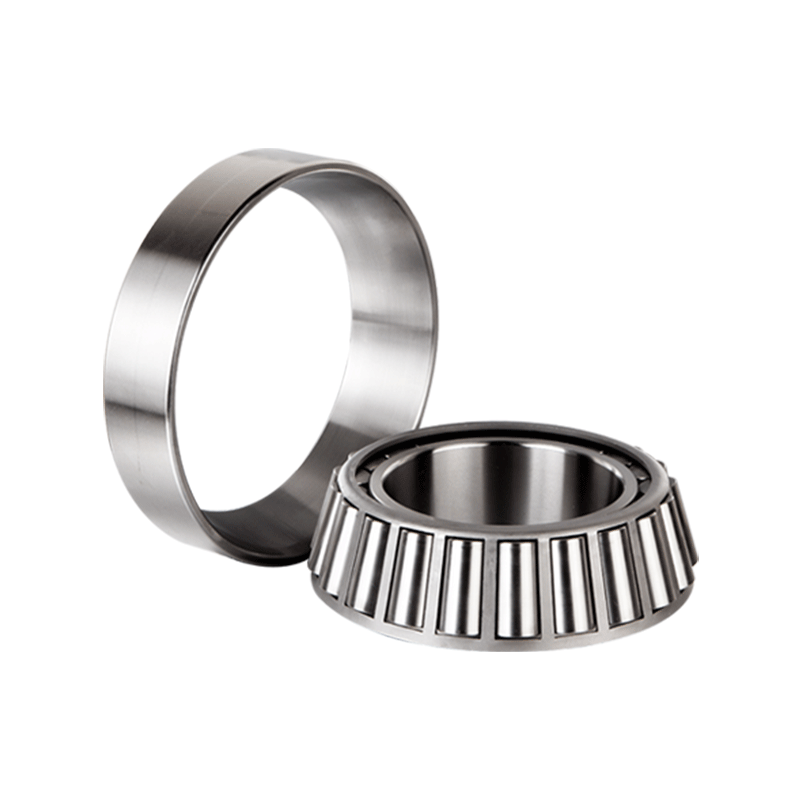Typical signs of bearing failure in engineering machinery can manifest in various ways. Here are common indicators, along with suggestions on how users can troubleshoot and diagnose these issues:
Unusual Noise:
Sign of Failure: Distinctive and disruptive sounds during machinery operation, like grinding, clicking, or high-pitched squealing.
Troubleshooting/Diagnosis: Conduct a meticulous analysis of the noise characteristics. Use specialized acoustic tools or microphones to pinpoint the source. Examine the machinery under various loads and speeds to observe changes in noise. Investigate potential misalignments, improper lubrication, or physical damage to bearing components contributing to the abnormal sounds.
Vibration:
Sign of Failure: Excessive and disruptive vibrations during machinery operation, often felt through touch or observed visually.
Troubleshooting/Diagnosis: Utilize advanced vibration analysis tools, accelerometers, or 3D vibration sensors to quantify and categorize vibrations. Identify the frequency and amplitude of vibrations and correlate them with known issues in bearing systems. Investigate factors like misalignment, unbalanced loads, or resonance that may amplify vibrations. Employ spectrum analysis to uncover nuanced vibration patterns.
Increased Temperature:
Sign of Failure: Elevated temperatures in the bearing housing, potentially leading to thermal damage.
Troubleshooting/Diagnosis: Apply infrared temperature measurement tools with precision to identify localized heat buildup. Conduct thermal imaging scans during different operational phases. Investigate potential causes, including increased friction due to misalignment, inadequate lubrication, or excessive loads. Inspect the cooling mechanisms and assess the efficiency of heat dissipation systems.
Lubrication Issues:
Sign of Failure: Irregular or insufficient lubrication, visible contamination in the lubricant, potentially leading to accelerated wear.
Troubleshooting/Diagnosis: Implement an in-depth examination of the lubrication system. Investigate for leaks, blockages, or malfunctions in the lubrication delivery. Employ oil or grease analysis techniques to detect contaminants and assess the lubricant's condition. Review lubrication schedules, types, and quantities to ensure they align with manufacturer recommendations. Consider implementing automatic lubrication systems for precise control.
Irregular Movement:
Sign of Failure: Noticeable shaft play, wobbling, or erratic movement in the bearing, indicating potential structural compromise.
Troubleshooting/Diagnosis: Perform a hands-on inspection, checking for irregularities in shaft movement. Investigate potential causes such as misalignment, wear-induced play, or damage to associated components. Utilize precision measuring tools to assess clearances and fits. Verify proper installation practices, including shaft and housing tolerances.
Visible Damage:
Sign of Failure: Evident physical damage such as cracks, pitting, or flaking on bearing surfaces.
Troubleshooting/Diagnosis: Execute a meticulous visual inspection of bearing components. Utilize magnification tools to identify microscopic damage. Probe the surrounding environment for abrasive particles or contaminants that could contribute to surface degradation. Promptly replace damaged bearings, and conduct a forensic analysis to ascertain the root cause and implement preventative measures.
Abnormal Wear Patterns:
Sign of Failure: Uneven wear, spalling, or brinelling on bearing surfaces, indicative of sustained stress or poor lubrication.
Troubleshooting/Diagnosis: Employ advanced surface analysis techniques, such as microscopy or profilometry, to scrutinize wear patterns. Investigate potential root causes, such as misalignment, overloading, or inadequate lubrication. Implement condition monitoring technologies, including vibration analysis and oil debris analysis, to detect early signs of wear and intervene proactively.
Frequent Failures:
Sign of Failure: Bearings experiencing premature failure at an unusually high frequency, suggesting systemic issues.
Troubleshooting/Diagnosis: Compile a comprehensive history of failures, analyzing trends and commonalities. Scrutinize maintenance practices, including lubrication schedules and installation procedures. Investigate environmental factors, operational conditions, and load variations. Engage in a systematic review, potentially involving root cause analysis tools like Fishbone diagrams or Failure Mode and Effects Analysis (FMEA), to identify and rectify underlying issues.
Single Row Tapered Roller Bearings

Single Row Tapered Roller Bearings



 English
English Deutsch
Deutsch























